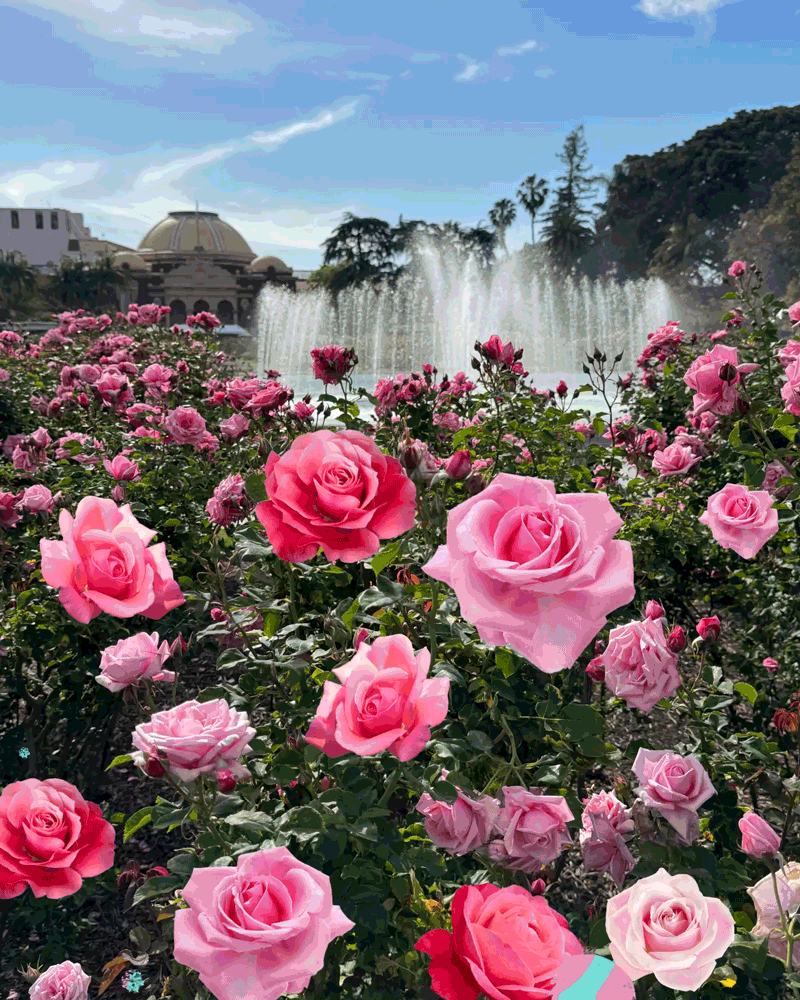Gift Books, 1986 : Among the Hardiest Perennials
- Share via
No doubt, before there were words there were gardens. But with the taming of the landscape and its continual refashioning, indoors and out, countless words have tried to put it in its proper place. The poet has long sought to probe the essence of the flower. The more prosaic among us continually try to tell one another how to grow it. This year brings an abundant--and most worthwhile--harvest of books on gardening, several of which would be welcome under the seasonal tree.
Perhaps the most ambitious venture is The Oxford Companion to Gardens, edited by Geoffrey & Susan Jellicoe, Patrick Goode and Michael Lanaster (Oxford University: $49.95; more than 250 black-and-white illustrations, 24 pages of color plates; 635 pp.). This encyclopedic roundup reflects contributions of 170 experts on garden history, horticulture and landscape design. The virtue of such a massive effort, however, is also its primary drawback: Entries are terse and encyclopedic, factual and dry. Case in point is the page-and-a-half essay on the “indoor garden.” In the hands of John Brookes, that is the subject of a sumptuous, well-fashioned book.
The Indoor Garden Book (The Complete Guide to the Creative Use of Plants and Flowers in the Home) by John Brookes (Crown: $24.95; 288 pp., indexed, color photographs or black-and-white illustrations on every page) should appeal to the yuppie gardener. This beautifully designed volume, with a feel of nouvelle cuisine , is not for the plant lover but for the person who wants to integrate plants into the decor. Chapters focus on the decorative qualities of plants, plant display, cut-flower and dried-flower arranging and a room-by-room guide to plant use. Plants are divvied up by type: upright, arching, rosette-shaped, creeping, bulbs, etc. The entire effort feels like a house-and-garden tour through some of the best plants around, but for those who fall in love with the odd specimen that doesn’t quite fit the “decor,” this may be a bit too tidy.
On the other hand, The Good Housekeeping Encyclopedia of House Plants by Rob Herwig (Hearst Books: $19.95; 288 pp., indexed, color photographs or black-and-white illustrations on every page) addresses the question of house plants more traditionally. There is an illustrated, readable 30-page discussion of plant care and cultivation, but the bulk of this oversize book lists more than 1,500 plant species. A snippable bookmark from the jacket details symbols for water, light, atmospheric and other requirements. The full-color photos of each genus, presented alphabetically (but also indexed by popular name) and clearly delineated instructions on the care and feeding of each plant make this a valuable volume.
Addressing the serious student of gardening history is Maggie Keswick, whose The Chinese Garden (St. Martin’s: $14.95, paperback; 216 pp., indexed, black-and-white and color photos) traces the “history, art and architecture” of the Chinese garden and the philosophy and literature that helped shape it. An appendix to this edition of the ’78 work lists Chinese gardens accessible to tourists.
On a smaller scale, Timeless Trees, photographed by Peter L. Bloomer, with text and poetry selections by Mary Holmes Bloomer (Horizons West, 427 S. San Francisco St., Flagstaff, Ariz. 86001: $60.; 108 pp., more than 52 color photographs), offers a profile of another Eastern garden art, the Japanese bonsai. This collection of striking photographs with quotations from poets ends up sounding a tad pretentious. Subjects are plants in the U.S. National Bonsai Collection, ranging from Japanese red pine, quince, gingko and wisteria to my favorite, Japanese white beech designed as a forest in miniature.
In Sunflowers for Van Gogh (Rizzoli International: $25; 150 pp., 92 color illustrations), David Douglas Duncan captures on film the giant, mystical flower that enraptured Vincent Van Gogh. Duncan returns to the southern European fields where the sunflower yellows the landscape to “satisfy the commercial demand for vegetable oil.” Majestic in their 25-day lifespan, even in their drooping last days when ready to be shorn of seed, sunflowers know few rivals. Duncan, as Van Gogh before him, basks in their glory. Fortunately, Duncan lets his camera do most of his speaking; he’s less eloquent in prose. And the gathering together, apparently for the first time, of Van Gogh’s 11 sunflower portraits extant is a revelation in itself; coupled with Duncan’s contemporary portraits they are irresistible.
Long irresistible to Americans and Britons alike has been the plant conservatory, that magnificent glass enclosure allowing plants to flourish in an otherwise inhospitable environment. The English Garden Room by Elizabeth Dickson, photographs by Fritz von der Schulenberg (Little, Brown: $24.95; 160 pp., 120 color photographs) recalls “The Englishwoman’s Garden” and “The Englishman’s Garden.” From a 17th-Century gazebo to a weekend conservatory in Wiltshire, we discover--in the owners’ words and Von der Schulenberg’s sensitive pictures--the magic hold of such a retreat. As might be expected, some of the most intriguing essays come from writers whose works have long offered insight into gardens and gardening, particularly Hugh Johnson and Rosemary Verey. All 25 submissions are individual, personal forays; each garden room addresses a particular aspect of very particularized lives.
If the English garden has come to symbolize the most dedicated national love affair with gardening, then The Gardens of Ireland by Patrick Bowe, photographs by Michael George (New York Graphic Society: $39.95; 192 pp., indexed, 200 color photographs) should come as nothing short of a revelation. In magnificent picture and word, we encounter some of the grandest gardens on Earth. Bowe says that “Irish gardens like Irish people, are just a little wild. . . . Even when a gardener sets out with the notion of making a formal design, the untamable growth of his plants soon overwhelms it. . . . In the gardens of the Irish, Nature reigns supreme.” We travel from County Cork to County Down, encountering lush herbaceous borders, groves of willows and poplars lining winding streams, lovely mixed island borders that had to be created from trucked-in soil. This is a beautiful volume, lovingly put together, in which “a garden . . . can be appreciated for itself, as the consummate work of art it is.”
Among the most consummate garden artists of the 20th Century was Vita Sackville-West, whose writings on gardening and whose own gardens strongly influenced contemporary landscape thinking and design. Vita’s Other World: A Gardening Biography of V. Sackville-West by Jane Brown (Viking: $20; 240 pp., indexed, 29 color and 98 black-and-white photographs) attempts to distill from Sackville-West’s thoughts and emotions, memories and experiences just what it was that led her to such heights as a gardener. Unfortunately, in trying to extract that elusive quality, Brown succeeds only in presenting a jumble of material, glossing over complex relationships. Much of the tracery is fascinating, but far too much is presented in prosaic detail that all but buries its fascinating subject. Sackvile-West emerges with quiet dignity, wry wit and strong individuality in her own writing, however, collected in The Illustrated Garden Book: A New Anthology by Robin Lane Fox, illustrations by Freda Titford, photographs by Ken Kirkwood (Atheneum: $22.50; 192 pp., indexed, 17 color photographs, 92 color illustrations). As these excerpts--newly collected from Sackville-West’s 15 years of columns for the Observer--reveal, she wrote with authority, charm and style. Titford’s deft illustrations lend just the right touch of playfulness and detail, further enhanced by Kirkwood’s photos of Sissinghurst Castle, including Sackville-West’s famed White Garden. These excerpts from columns spanning the years 1946-1961, arranged by month, let us follow her experimentation, failures and successes--all from a point of view that never preaches but instead questions and wonders. Lane points out “many people nowadays buy garden books as presents, but few of the recipients use them for very long.” Here is one book that can be used for very long. A present for yourself--or another gardener, who relishes sitting in the garden absorbing well-considered words on gardening.






